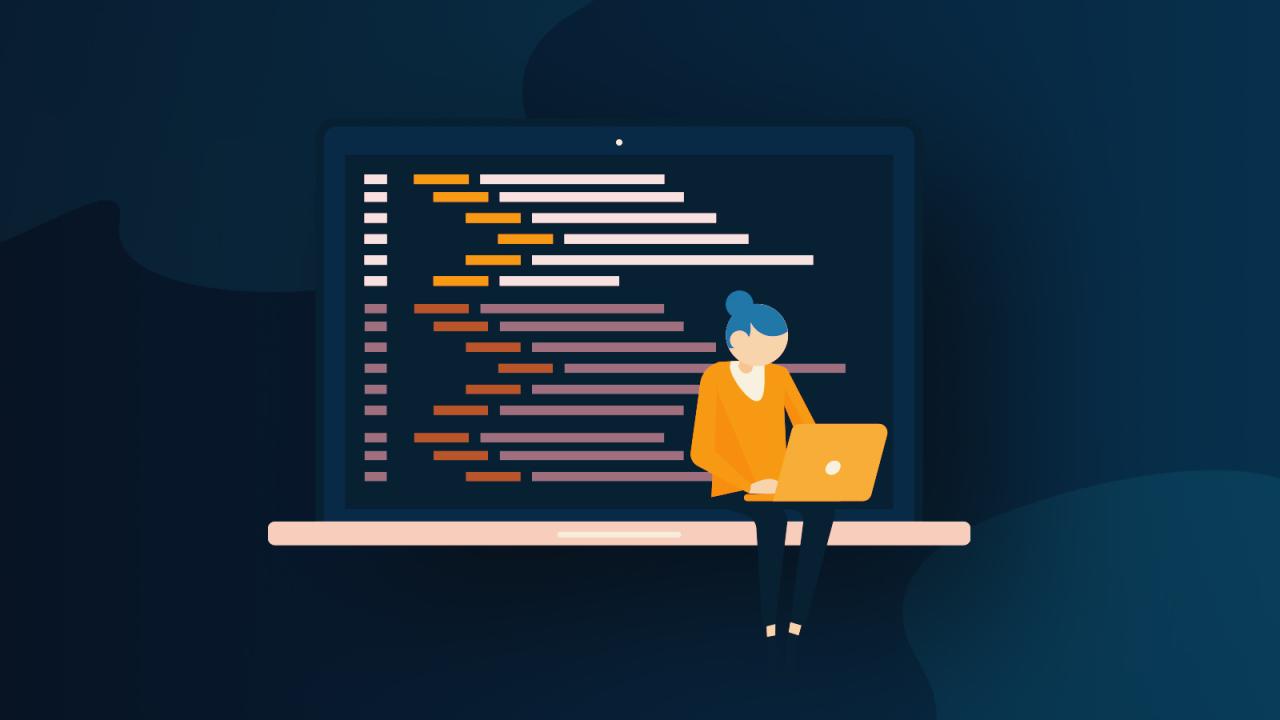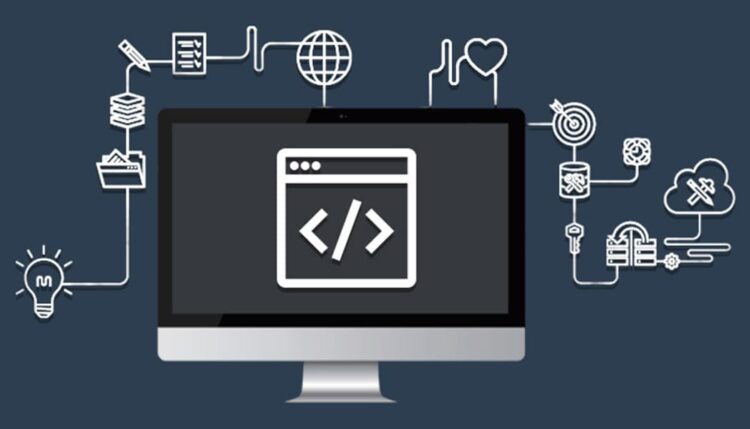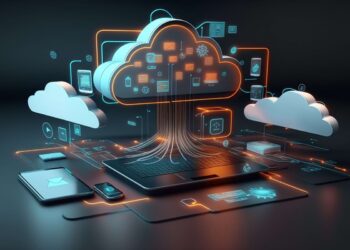The visible elegance of a website or mobile application, the smooth user experience, and the instant responsiveness we’ve come to expect are all underpinned by a complex, unseen engine: the backend. Often residing in the shadows, the backend is the unsung hero, handling data storage, business logic, authentication, and the myriad of processes that make modern digital services function seamlessly. The truth is, a surge of backend innovations is silently revolutionizing how we build, deploy, and scale digital infrastructure, promising greater efficiency, resilience, and unprecedented capabilities. This ongoing transformation is not merely about incremental improvements; it’s a fundamental shift in the architecture of the digital world.
The Evolution of Backend Architectures

The journey of backend development has been one of continuous evolution, driven by the increasing demands for scalability, performance, and flexibility. From monolithic applications to highly distributed systems, each architectural shift has aimed to address the limitations of its predecessors.
A. Monolithic Applications: The Early Foundation:
* Characteristics: In a monolithic architecture, all components of an application (user interface, business logic, data access) are tightly coupled and run as a single, unified service.
* Advantages: Simplicity of development in early stages, easier deployment for small applications, and straightforward debugging within a single codebase.
* Disadvantages: Limited scalability (scaling the entire application even if only one component needs more resources), difficult to maintain and update (a change in one module can affect others), slow deployment cycles, and technology lock-in. A single failure point could bring down the entire system.
* Early Example: Traditional three-tier web applications where the frontend, business logic, and database all reside within a single deployment unit.
B. Service-Oriented Architectures (SOA): Introducing Modularity:
* Characteristics: SOA breaks down a monolithic application into a collection of loosely coupled, independent services that communicate with each other, often using standard protocols like SOAP or REST.
* Advantages: Increased modularity, reusability of services, improved scalability (individual services can be scaled independently), and easier integration with external systems.
* Disadvantages: Can be complex to manage due to distributed nature, increased network latency between services, and dependency on robust service communication protocols.
* Key Concept: Emphasized interoperability and reuse across an enterprise, often involving an Enterprise Service Bus (ESB) for communication management.
C. Microservices: Granular Independence:
* Characteristics: An evolution of SOA, microservices break applications into even smaller, completely independent services, each running in its own process, deployed independently, and managing its own data.
* Advantages: Extreme scalability (each microservice can be scaled granularly), technology diversity (different services can use different programming languages or databases), faster development cycles, easier maintenance, and enhanced fault isolation. A failure in one microservice doesn’t necessarily bring down the entire application.
* Disadvantages: Increased operational complexity (managing many services), distributed data consistency challenges, sophisticated monitoring and logging required, and potential for “dependency hell” if not managed carefully.
* Impact: Revolutionized how large-scale, complex applications are built and managed, particularly in cloud environments.
D. Serverless Architectures (Functions as a Service – FaaS): Abstraction of Infrastructure:
* Characteristics: Developers write and deploy code in functions, and the cloud provider automatically manages the underlying infrastructure, including server provisioning, scaling, and maintenance. Developers only pay for the compute time consumed by their code.
* Advantages: Tremendous operational efficiency (no server management), automatic scaling to zero (no cost when idle) and to immense capacity, rapid deployment, and focus on pure business logic.
* Disadvantages: Vendor lock-in, potential for “cold starts” (initial latency for infrequently used functions), debugging can be challenging across distributed functions, and cost predictability can be complex for highly variable workloads.
* Future Direction: Represents a significant move towards abstracting away infrastructure concerns, allowing developers to focus entirely on application logic.
Key Innovations Driving the Backend Surge
The current wave of backend innovation is fueled by advancements in various technological domains, each contributing to more robust, efficient, and intelligent systems.
A. Cloud-Native Computing:
* Definition: An approach to building and running applications that exploits the advantages of the cloud computing delivery model. It emphasizes speed, agility, and scalability.
* Containerization (Docker): Packaging applications and their dependencies into lightweight, portable units called containers. This ensures consistent environments from development to production.
* Orchestration (Kubernetes): Automating the deployment, scaling, and management of containerized applications across clusters of servers. Kubernetes has become the de facto standard for managing microservices at scale.
* Service Meshes (Istio, Linkerd): A dedicated infrastructure layer that handles communication between microservices, offloading concerns like traffic management, security, and observability from individual applications.
* Cloud-Native Databases: Databases designed specifically for cloud environments, offering scalability, high availability, and often “serverless” operational models (e.g., Amazon Aurora Serverless, Google Cloud Spanner).
* Impact: Enables highly resilient, scalable, and agile application deployments that can adapt rapidly to changing demands.
B. Advanced Database Technologies:
* NoSQL Databases: Addressing the limitations of traditional relational databases for unstructured or rapidly changing data.
* Document Databases (MongoDB): Flexible schema, ideal for content management, catalogs.
* Key-Value Stores (Redis, DynamoDB): High-speed data retrieval, great for caching, session management.
* Column-Family Databases (Cassandra): Highly scalable for large datasets, suitable for time-series data, IoT.
* Graph Databases (Neo4j): Optimized for highly connected data, used for social networks, recommendation engines, fraud detection.
* NewSQL Databases: Combining the scalability of NoSQL with the ACID properties (Atomicity, Consistency, Isolation, Durability) and relational model of traditional SQL databases (e.g., CockroachDB, TiDB).
* Vector Databases: Emerging specifically for AI/ML applications, particularly for handling high-dimensional vector embeddings, crucial for similarity search, recommendation systems, and large language models (LLMs).
* In-Memory Databases: Storing data in RAM for extremely fast access, used for real-time analytics, high-frequency trading, and caching.
* Impact: Provides developers with a diverse arsenal of data storage solutions tailored to specific application needs, optimizing performance and scalability.
C. Event-Driven Architectures and Messaging Queues:
* Definition: Systems where components communicate by sending and receiving events, rather than direct calls. This creates highly decoupled and responsive systems.
* Messaging Queues (Kafka, RabbitMQ, SQS): Act as intermediaries, allowing different parts of an application to communicate asynchronously. This ensures messages are processed reliably even if a recipient service is temporarily unavailable.
* Event Streaming Platforms (Kafka): Designed for high-throughput, fault-tolerant processing of real-time data streams, essential for analytics, fraud detection, and real-time user experiences.
* Advantages: Increased scalability (services don’t wait for responses), improved fault tolerance, and greater flexibility in integrating disparate systems.
* Impact: Enables the creation of highly responsive, scalable, and resilient systems capable of handling massive volumes of real-time data and diverse interactions.
D. Edge Computing and Distributed Systems:
* Definition: Moving computation and data storage closer to the source of data generation (the “edge” of the network), rather than relying solely on centralized cloud data centers.
* Why it Matters: Reduces latency for real-time applications (e.g., autonomous vehicles, augmented reality), conserves bandwidth by processing data locally, and enhances security by minimizing data transmission over wide networks.
* Backend Implications: Requires new backend paradigms for managing distributed data, synchronized operations across multiple edge locations, and ensuring consistency.
* Distributed Ledgers (Blockchain): While primarily known for cryptocurrencies, blockchain’s underlying distributed ledger technology can provide secure, immutable, and transparent record-keeping for backend systems, particularly for supply chains and identity verification.
* Impact: Enables truly real-time applications, particularly for IoT and AI, and fosters resilience through decentralized processing.
E. AI and Machine Learning Integration in Backend Logic:
* Backend as AI Enabler: The backend is where machine learning models are often deployed, managed, and served. This includes MLOps (Machine Learning Operations) for model training, deployment, and monitoring.
* Real-time Analytics: Processing and analyzing streaming data in real-time to power personalized recommendations, fraud detection, and dynamic content delivery.
* Intelligent Automation: Using AI to automate backend tasks like resource provisioning, anomaly detection, and self-healing systems.
* AI-Powered APIs: Exposing AI models through APIs, allowing developers to easily integrate capabilities like natural language processing, image recognition, and predictive analytics into their applications.
* Impact: Transforms static applications into intelligent, adaptive, and highly personalized user experiences.
The Transformative Impact on Industries

The surge in backend innovation isn’t just a technical curiosity; it has profound implications for how industries operate, enabling new business models and vastly improving existing services.
A. E-commerce and Retail:
* Hyper-Personalization: Real-time recommendation engines, dynamic pricing, and personalized product displays powered by highly scalable backend analytics and AI.
* Seamless Omni-Channel Experiences: Backend systems integrating online sales, in-store inventory, customer loyalty programs, and logistics for a unified shopping journey.
* Scalability for Peak Loads: Microservices and serverless architectures handle massive traffic spikes during sales events (e.g., Black Friday) without downtime.
* Fraud Detection: Real-time analysis of transactions using ML models to identify and prevent fraudulent activities.
B. Fintech and Banking:
* Real-time Transactions and Analytics: High-performance backend systems enable instant payment processing, real-time fraud detection, and immediate account updates.
* Open Banking and APIs: Secure and standardized APIs allow seamless integration with third-party financial services, fostering innovation.
* Enhanced Security: Advanced encryption, immutable ledgers (blockchain possibilities), and AI-powered anomaly detection to protect highly sensitive financial data.
* Personalized Financial Advice: AI models running on the backend analyze user spending patterns and financial goals to offer tailored advice.
C. Healthcare and Life Sciences:
* Secure Patient Data Management: Backend systems ensure the secure storage, retrieval, and sharing of electronic health records (EHR) while complying with stringent regulations (e.g., HIPAA).
* Real-time Health Monitoring: Processing data from wearables and IoT medical devices for remote patient monitoring, powered by robust backend data ingestion and processing.
* Drug Discovery Acceleration: AI-powered backend platforms analyze vast biological datasets to identify drug candidates, predict protein structures, and accelerate research.
* Personalized Medicine: Backend systems integrate genetic data, lifestyle information, and clinical records to inform highly personalized treatment plans.
D. Gaming and Entertainment:
* Massive Multiplayer Online (MMO) Scalability: Backend infrastructure designed to support millions of concurrent users, handling real-time game state synchronization and player interactions.
* Personalized Content Delivery: Recommendation engines for movies, music, and games, leveraging complex backend algorithms and user data.
* Low-Latency Streaming: Edge computing and optimized backend networks deliver high-quality video and gaming streams with minimal lag.
* User-Generated Content Management: Robust backend systems to store, moderate, and deliver vast amounts of user-generated content securely.
E. Manufacturing and IoT:
* Industrial IoT (IIoT) Data Ingestion: Backend systems capable of handling massive streams of data from factory sensors, machines, and connected devices for real-time monitoring and predictive maintenance.
* Digital Twins: Backend platforms creating and managing virtual replicas of physical assets, allowing for simulation, optimization, and remote control.
* Supply Chain Optimization: Leveraging distributed ledgers and real-time data processing for enhanced transparency and efficiency across complex supply chains.
* Automated Quality Control: AI models deployed on the backend analyze sensor data or images to detect defects in manufacturing processes.
Challenges and Future Trajectories
Despite the rapid advancements, the backend landscape presents ongoing challenges and exciting future directions that will continue to shape digital infrastructure.
A. Current Challenges:
* Complexity Management: The move to microservices and distributed systems significantly increases operational complexity, requiring sophisticated tools for monitoring, debugging, and deployment.
* Security in Distributed Systems: Securing numerous independent services, managing inter-service communication, and ensuring data consistency across distributed databases presents new security challenges.
* Talent Gap: A shortage of skilled professionals proficient in cloud-native technologies, advanced database management, and distributed system architectures.
* Cost Optimization: While serverless can reduce costs, managing resource consumption across highly dynamic, distributed systems requires careful optimization to avoid unexpected expenses.
* Data Governance and Compliance: Ensuring data privacy, residency, and compliance with various regulations across globally distributed backend systems.
* Vendor Lock-in: While cloud platforms offer immense benefits, relying heavily on proprietary services can create vendor lock-in, making migration difficult.
B. Future Trajectories and Emerging Paradigms:
* “Everything as Code”: Further automation of infrastructure, configuration, security policies, and even data schema definition through code (Infrastructure as Code, Policy as Code).
* AI-Driven Operations (AIOps): Leveraging AI and ML to automate IT operations, including anomaly detection, predictive maintenance for backend systems, and automated incident response, reducing human intervention.
* WebAssembly (Wasm) on the Server: Running WebAssembly modules on the server-side as a lightweight, secure, and highly performant alternative to traditional containers for certain backend workloads.
* Quantum-Safe Cryptography: As quantum computing advances, the backend will need to integrate new cryptographic algorithms resistant to quantum attacks to protect sensitive data.
* Increased Emphasis on Observability: Beyond just monitoring, building systems that provide deep insights into their internal state, allowing for better understanding and quicker resolution of issues in complex distributed environments.
* Sustainable Backend Infrastructure: Designing and optimizing backend systems for energy efficiency, utilizing renewable energy sources for data centers, and minimizing the environmental footprint of digital services.
* Low-Code/No-Code for Backend: While primarily focused on frontend, tools are emerging that abstract backend complexity, allowing even non-developers to build simple backend logic and integrations.
Conclusion
The backend innovations surging through the technology landscape are fundamentally reshaping the capabilities and resilience of our digital world. From the granular control offered by microservices and containers to the unparalleled scalability of serverless architectures and the intelligent insights powered by AI, the evolution of backend systems is relentless. These unseen engines are not just supporting the applications we use daily; they are actively driving the next wave of digital transformation, enabling new forms of interaction, powering real-time insights, and laying the groundwork for a more connected, intelligent, and efficient future. As organizations continue to navigate the complexities of digital evolution, a deep understanding and strategic investment in cutting-edge backend technologies will be the decisive factor in achieving competitive advantage and sustained innovation.









